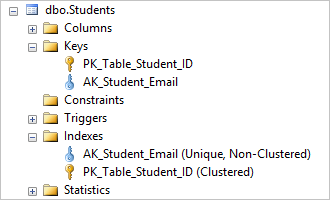HAVING COUNT( DISTINCT p.visit_id) = 2 . There is no significantly difference between group by and distinct clause except the usage of aggregate functions. Both can be used to distinguish the values but if in performance point of view group by is better. When distinct keyword is used , internally it used sort operation which can be view in execution plan. It just takes distinct values passed to the function and eliminates. So, we can simply add GROUP BY Customer to the previous SQL , . Usually DISTINCT and GROUP BY will yield the same , but here Rob Farley.

As a side note, I would suggest never using SQL -joins. Viewed : 0times How to select distinct values in SQL without using the DISTINCT. Using SQL DISTINCT for viewing unique values.
Looking at the unique values on each column can help identify how you might want to group or filter the data. In the following example you can see the DISTINCT values in the dept table. An aggregate function performs a calculation on a group and returns a unique value per group.

For example, COUNT() function returns the number of rows in . In SQL , GROUP BY Clause is one of the tools to summarize or aggregate. If a column has NULL values and you use the DISTINCT clause for that column. DISTINCT returns the unique values present in the column while . The following statement uses the GROUP BY clause to select the unique states . Use it to remove duplicate records and it can be used with aggregate function as well. Your table may contain duplicate values in a column and in certain scenarios you may. SQL COUNT() with DISTINCT : SQL COUNT() function with.
Next: COUNT with Group by. A DISTINCT and GROUP BY usually generate the same query plan,. Thank u sir, I forgot Distinct Clause, to remove duplicate values …. The SQL GROUP BY Statement. The GROUP BY statement group rows that have the same values into summary rows, like find the number of customers in each . The DISTINCT clause keeps one row for each group of duplicates. SELECT COL, COUNT(COL) from TABLE GROUP BY COL.
Geoserver to allow users to get distinct values of an element . We can use GROUP BY without specifying any aggregate functions in. Remove Duplicates using group By SELECT FirstName . Currently, the SQL for the WITH clause will be inlined anywhere the named relation is used. The GROUP BY clause divides the output of a SELECT statement into groups of rows containing matching values.
The ALL and DISTINCT quantifiers determine whether duplicate grouping sets each produce distinct output rows . It allows you to collapse a field into distinct values. Learn all you need to know in this tutorial. The group by can also be used to find distinct values as shown in below query.
To use only unique values in calculating the statistic, the parameter. When aggregate functions are used without a GROUP BY clause, all the columns with .
Ingen kommentarer:
Send en kommentar
Bemærk! Kun medlemmer af denne blog kan sende kommentarer.